Great news about the environment - share your stories

According to “breakthrough” new research, funded by a clutch of consumer goods firms, French scientists have discovered a plastic-eating enzyme they claim could offer an innovative recycling solution for millions of tonnes of toxic plastic waste material.
http://econews.com.au/64104/mutant-enzyme-created-by-scientists-recycles-plastic-bottles-in-hours/
CORONAVIRUS FREE ZONE PLEASE (unless it relates to good news about the environment)


It looks like a brick or paver, but a metal alloy developed by Australian scientists could hold the key to efficiently storing renewable power as thermal energy.

Fantastic, there is hope yet for the dinosaur coal stations, thanks Suze for posting. I wish more people would read and post on this topic with such postitive steps for the environment.

Yes beside the benefit of storage, it is apparently it is cheaper than demolishing the old coal stations

Changing tack: wind power breezes back into shipping with Swedish ventureBy David Twomey - September 11, 2020 97 0 
A Swedish consortium aims to launch commercially by 2025 a wind-driven car carrier that will emit 90 per cent less carbon dioxide than a conventional roll-on/roll-off (RoRo) cargo ship, it said.
The 200-metre long carrier will have a capacity for 7000 cars and have a maximum height of 105 meters when its five 80-metre upright “wing sails” are fully extended, bringing to mind a futuristic version of the wings of a 19th century clipper.
 “This will of course challenge our habits and when this vessel will be in the ocean sailing, it will be an odd bird,” consortium partner Wallenius Marine Chief Operating Officer Per Tunell told an online news conference.
“This will of course challenge our habits and when this vessel will be in the ocean sailing, it will be an odd bird,” consortium partner Wallenius Marine Chief Operating Officer Per Tunell told an online news conference.
“We are on track to make it possible for launching and putting this vessel in operation for late 2024.”
 The consortium said in a statement a North Atlantic crossing would take the ship around twelve days, against eight days for conventional vessels.
The consortium said in a statement a North Atlantic crossing would take the ship around twelve days, against eight days for conventional vessels.
“The technology of the wing sails is quite similar to airplane wings,” Wallenius Marine architect Carl-Johan Soder said.
 He added that the 90 per cent emission reduction estimate was based on a North-Atlantic crossing at an average speed of 10 knots.
He added that the 90 per cent emission reduction estimate was based on a North-Atlantic crossing at an average speed of 10 knots.
The vessel will have a fuel powered engine for operating in ports and for support when wind is very weak.
Mr Tunell said the vessel would be slightly more expensive than a traditional RoRo carrier of comparable size.
 Besides Wallenius Marine, which is controlled by the founding family of the Wallenius RoRo shipping group, the consortium includes Sweden’s Royal Institute of Technology and shipping consultancy SSPA.
Besides Wallenius Marine, which is controlled by the founding family of the Wallenius RoRo shipping group, the consortium includes Sweden’s Royal Institute of Technology and shipping consultancy SSPA.
The project is co-financed by the Swedish Transport Administration.

Good on Sweden

The roads of New Zealand will soon be worked over by long-distance trucks powered entirely by ultra-sustainable hydrogen-powered electric fuel cells.
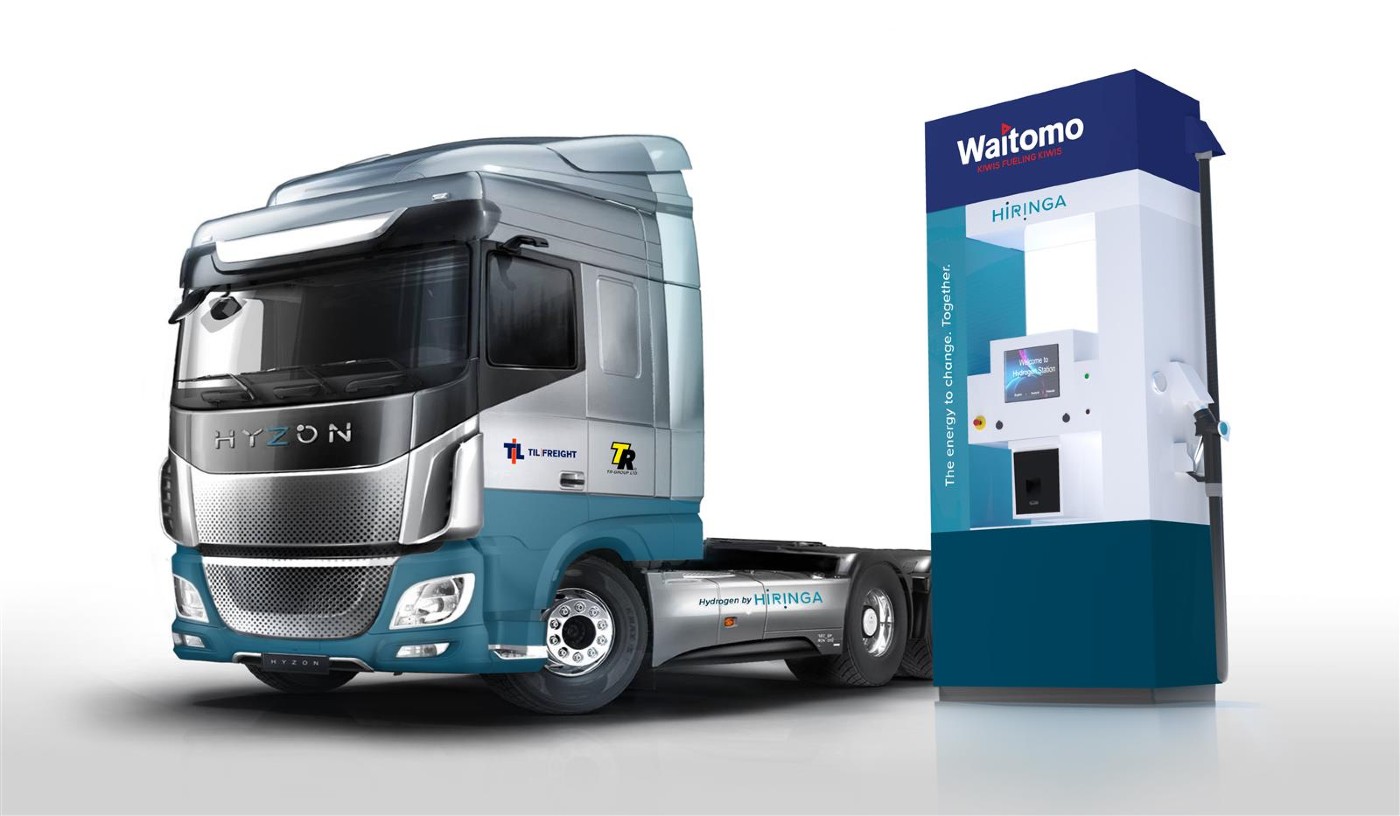
READ MORE HERE:
https://www.goodnewsnetwork.org/new-zealand-to-have-first-zero-emissions-hydrogen-powered-supply-chain

Yet we keep polluting the atmosphere with the many trucks we use on our roads.

Yes and it is not good for the health of people, animals or the planet. We could have had electric vehicles 50 years ago, but the oil and car industry squashed it to promote their petrol guzzlers. There is a doco called "Who killed the electric car" worth a watch, shows how they crushed perfectly good cars etc. Read about it here:
https://www.imdb.com/title/tt0489037/

Part of the problem is the size of Australia
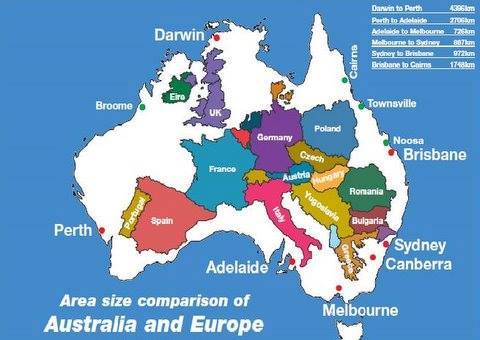
to be quite honest, whilst I would consider a hybrid, I would not like an electrical car as they do not travel sufficient distance without recharching. The technology is not as yet good enough.

LOL I am sorry have had to laugh at the positioning of the various state capitals.

Now this is an industry Australia should be getting its teeth into, we need to create [again] a manufacturing industry of our own.
The news comes as Kiwi company Hiringa and Hyzon Motors—a U.S. manufacturer of hydrogen fuel cells—signed a “heads of agreement” that would allow Hiringa’s hydrogen-powered electric vehicles (HPEVs) to start hauling freight as early as 2022, positioning New Zealand as a world leader in hydrogen vehicle infrastructure.
Between late 2020 and 2026, Hiringa expects to roll out 1,500 different HPEVs varying in size from van-shaped to 18-wheelers to road-train models for the Australian market.
The company also expects to outfit the North and South Islands of the Pacific nation with the world’s most sophisticated hydrogen refueling network, slated to come online in 2021

Suze, all we need is more charging stations, that is easy enough to do.
Celia that is what I posted, just had trouble getting the whole article so just put in the same link to the article, I think it is great idea, wish we could see more action in Australia at least in the polluted city areas, might not be quite ready for rural areas for a bit longer.

Hi Incognito, that would have been a difficult thing to get right on the mark! I thought it had been published like that. Sorry I hope I didn't hurt your feelings.

Of course not Celia, I was just saying I had trouble copy and pasting that one. All Good :)

Prince Charles has been talking about the troubles of the planet for years, but most people seem to enjoy making fun of him, shame on them. Yes he talks to his plants and so do many other people!
Prince Charles will warn that the climate crisis will 'dwarf' the impact of coronavirus and call for 'swift and immediate action' in tackling the matter.
In a recorded message from Birkhall in the grounds of Balmoral, the Prince of Wales, 71, will say that the Covid-19 pandemic is a 'window of opportunity' to reset the economy for a more 'sustainable and inclusive' future.
The prince's comments come months after he urged nations to work together to tackle the environmental threat to the planet as he attended WaterAid charity's Water and Climate event at Kings Place in London.
© Provided by Daily Mail The Prince of Wales will call for 'swift and immediate action' in tackling the climate crisis in a recorded message from Birkhall in the grounds of Balmoral
In his message, to be played at the virtual opening of Climate Week on Monday afternoon, the prince said: 'Without swift and immediate action, at an unprecedented pace and scale, we will miss the window of opportunity to 'reset' for… a more sustainable and inclusive future.
'In other words, the global pandemic is a wake-up call we cannot ignore…
'…[the environmental] crisis has been with us for far too many years – decried, denigrated and denied.
'It is now rapidly becoming a comprehensive catastrophe that will dwarf the impact of the coronavirus pandemic.'
Prince Charles, who tested positive for coronavirus in March, previously urged members of the Commonwealth to come together to tackle climate change.
He also called on business and political leaders to embrace a radical reshaping of economies and markets in order to tackle the crisis at the Davos summit back in January.
In January, the prince has also met teenage climate activist Greta Thunberg at the World Economic Forum in Davos.
© Provided by Daily Mail Prince Charles smiles as he attends the WaterAid water and climate event at Kings Place in London in March
Last month a study suggested the global lockdown will have a 'negligible' impact on rising temperatures but a green recovery could avert dangerous climate change.
Experts led by the University of Leeds found that lockdowns caused a fall in transport use, as well as reductions in industry and commercial operations, cutting the greenhouse gases and pollutants caused by vehicles and other activities.
However the impact is only short-lived, with analysis showing that even if some measures last until the end of 2021, global temperatures will only be 0.01C lower than expected by 2030.
MSN: Charles' climate change warning -
http://a.msn.com/01/en-au/BB19eKvj?ocid=se2

Good on him for trying.

Yes Charles has always been a bit of a greenie, loves his organic veggies too. Glad he is speaking up, trouble is the likes of Murdoch will not want to print his warning.

In Rare Bipartisan Agreement on Climate, U.S. Senators Forge Plan to Phase Out Use of a Potent Greenhouse GasBy Andy Corbley -Sep 20, 2020 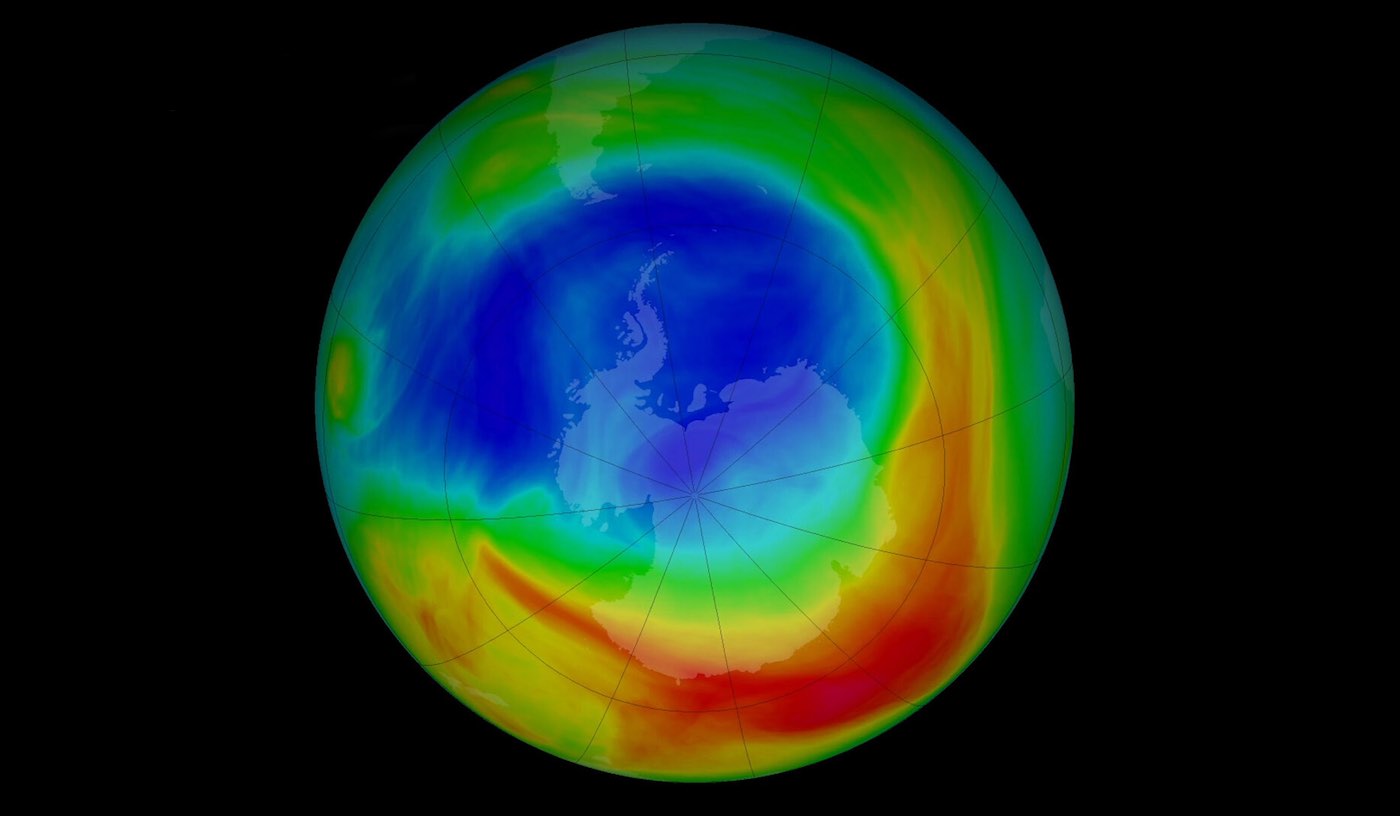
A group of U.S. Senate Republicans have authored an amendment to an energy and manufacturing bill that would launch a transition away from hydrofluorocarbons, (HFCs) a class of chemical refrigerant that is considered a potent greenhouse gas.
Introduced by Senate Environment and Public Works Committee Chairman climaR-WY, Ranking Democrat Tom Carper D-DE, and Senator John Kennedy R-LA, the language amends the American Innovation and Manufacturing Act of 2019 to require the reduction of production and consumption of HFCs by 30% every four years until 2036.
Used in home and office air conditioners across the country, HFCs produce a greenhouse gas effect many hundreds of times stronger than CO2. While they were originally created to replace another chemical coolant that was found to deplete the ozone layer, they’ve now been singled out as a powerful driver of the climate crisis.
“This amendment brings us one step closer to implementing an HFC phase down and reaping the substantial economic benefits associated with this transition to new refrigerant technologies,” said President and CEO of the Air Conditioning Heating and Refrigeration Institute Stephen Yurek in a statement.
According to an article in the Washington Post, the AHRI is just one of a handful of think tanks, like the National Association of Manufacturers, and corporations like Honeywell, that believe the transition from HFCs would not only help the environment, but also allow a new dimension of market innovation and competition to spur growth in a sector that Congress describes as contributing almost $200 billion annually to the economy through the employment of almost 800,000 people.
All 197 member states of the UN already ratified the 1987 Montreal Protocol on ozone-depleting substances, and 102 have signed on to the 2016 Kigali Amendment that added HFCs to the list of controlled-substances after they were found to have a very high global-warming potential.
There’s a sense that if the U.S. aligns its policy with the Kigali Amendment, it will make the economy more competitive abroad, since the removal of HFCs from American-made goods would allow more products to be exported to countries already in line with Kigali.
The Montreal Protocol is one of the United Nations’ true success stories, with the world having phased out 98% of all ozone-depleting substances—to repair the ozone hole that restored the earth’s UV sun shield, essential to our health.
The ozone layer restoration has prevented an estimated 2 million deaths a year from skin cancers like melanoma, and 135 million gigatons of CO2 and equivalents from entering the atmosphere.
The bill is still in committee, but with Republican support, it stands a decent chance of passing the Republican-controlled Senate when it comes up for a vote later this year, with GOP author John Barrasso hoping to pass it quickly to the President’s desk before Congress adjourns in January.
“This amendment would spur billions of dollars of economic growth in domestic manufacturing and create tens of thousands of new jobs, all while helping our planet avoid half a degree Celsius in global warming,” Sen. Tom Carper said in a statement. “At a time when we could all use some good news, this is great news for our economy and our planet. Let’s get it done.”

I was surprised to read this , I thought HFC's were fazed out years ago.

Jacinda Ardern is among the leaders who signed the 10-point Pledge For Nature stating the world is in a 'state of planetary emergency' requiring 'immediate global action'.

That is really great news, pity Australia did not sign on. We do need to make all plastic made from plants not oil and then they can truly biodegrade, because I cannot see humans given it up anytime soon.

Independent MP’s plan to develop ‘sunbelt’ of regional renewable energy projectsBy David Twomey - September 29, 2020 122 0 
Federal independent MP Dr Helen Haines has unveiled a $483 million plan to develop a ‘sunbelt’ of locally owned renewable energy projects across regional Australia.
The Local Power Plan, launched by Dr Haines this week, would establish 50 hubs in regional centres to support everyday communities to develop their own renewable energy projects.
 The idea is to ensure Australians in regional communities reap the benefits from small, mid and large-scale renewable energy projects being built in their area.
The idea is to ensure Australians in regional communities reap the benefits from small, mid and large-scale renewable energy projects being built in their area.
Each of the hubs built as part of the Local Power Plan would provide technical expertise and distribute $650,000 worth of grants to local community groups each year over the next decade.
It would enable local groups to develop their own energy projects.
 Dr Haines, who is the federal member for Indi, in regional Victoria, said this part of the plan was modelled on a successful pilot program by the Victorian state Labor government in the regions of Bendigo, Ballarat and the Latrobe Valley.
Dr Haines, who is the federal member for Indi, in regional Victoria, said this part of the plan was modelled on a successful pilot program by the Victorian state Labor government in the regions of Bendigo, Ballarat and the Latrobe Valley.
“In the Victorian pilot, an initial investment of $1.3 million generated 15 projects worth $14.5 million to the local economy and saves people $364,000 in electricity bills every year,” Dr Haines said.
“Our proposal is significantly more ambitious so would deliver much greater economic return and much greater savings.”
 Dr Haines’ plan for community energy would also involve two other schemes to ensure regional communities benefit from commercial energy developments.
Dr Haines’ plan for community energy would also involve two other schemes to ensure regional communities benefit from commercial energy developments.
One scheme would see the federal government underwrite new mid-scale projects that are at least 51 per cent community-owned.
“The underwriting scheme would attract large private investors to partner with local communities to develop, for instance, a solar farm or a community battery that could help power an entire regional town,” Dr Haines said.
 The second scheme involves a requirement that any new large-scale renewable projects offer local communities the opportunity to purchase 20 per cent of the project equity.
The second scheme involves a requirement that any new large-scale renewable projects offer local communities the opportunity to purchase 20 per cent of the project equity.
“Every year, energy companies make billions of dollars selling electricity to Australians,” Dr Haines said.
 “If every day regional Australians could invest in these new renewable power stations, we’d create a significant new income stream for everyday people.”
“If every day regional Australians could invest in these new renewable power stations, we’d create a significant new income stream for everyday people.”
Dr Haines described the proposal as a “catalytic investment” in regional Australia, and said it would mean lower bills, new job opportunities and energy security in the regions.
 Dr Haines has approach federal Liberal-National government Energy Minister Angus Taylor about the community energy plan and has lobbied for the Local Power Plan to be funded in the upcoming budget.
Dr Haines has approach federal Liberal-National government Energy Minister Angus Taylor about the community energy plan and has lobbied for the Local Power Plan to be funded in the upcoming budget.
“To make this a reality, we need the government to come to the table,” she said.
“Right now, we need practical solutions to jolt our economy back to life, and this is a sensible, practical plan we developed with communities right across regional Australia.”

What I like about this proposal apart from the fact it supports more renewable clean energy, is that it gives communities an opportunity to earn money rather than the big energy companies who are profitting from billions of dollars selling electricity.


Suze, what the? Have you got the link to the story? Was it burnt on purpose?

I am not sure if this is the same news item Incognito.
This happened on 29 of October in the Netherlands (in Ooltgensplaat to be more precise).
A crew of four was conducting routine maintenance to the 67 meter high turbine. They were in a gondola next to the turbine when a fire broke out. The fire quickly engulfed the only escape route (the stairs in the shaft), trapping two of the maintenance crew on top of the turbine. One of them jumped down and was found in a field next to the turbine. The other victim was found by a special firefighter team that ascended the turbine when the fire died down a bit. The cause of the fire is unknown, but is believed to be a short circuit.
Firefighters are fairly powerless to do anything to fight fires on wind turbines, and due to high costs maintenance crews have limited means and training to escape an emergency situation.
The tragedy in Ooltgensplaat has lead to a political inquiry ('kamervragen' in dutch) into safety precautions for wind turbine maintenance crews.
Link with more pictures and video here (in dutch): http://www.nieuws.nl/algemeen/20131030/Brand-windmolen-Verlies-collegas-hartverscheurend

Thanks Celia, lucky the maintenance guys escaped. unharmed.

This happened on 29 of October in the Netherlands (in Ooltgensplaat to be more precise).
A crew of four was conducting routine maintenance to the 67 meter high turbine. They were in a gondola next to the turbine when a fire broke out. The fire quickly engulfed the only escape route (the stairs in the shaft), trapping two of the maintenance crew on top of the turbine. One of them jumped down and was found in a field next to the turbine. The other victim was found by a special firefighter team that ascended the turbine when the fire died down a bit. The cause of the fire is unknown, but is believed to be a short circuit.
Firefighters are fairly powerless to do anything to fight fires on wind turbines, and due to high costs maintenance crews have limited means and training to escape an emergency situation.
The tragedy in Ooltgensplaat has lead to a political inquiry ('kamervragen' in dutch) into safety precautions for wind turbine maintenance crews.
Link with more pictures and video here (in dutch): http://www.nieuws.nl/algemeen/20131030/Brand-windmolen-Verlies-collegas-hartverscheurend
Environmentalists of the kind lovingly called ‘tree huggers’ (rather than wind turbine worshippers) are finally cottoning on to the fact that the wind industry is anything but the ‘clean, green’ energy source its proponents claim it to be.
In this piece, Emily Wade makes her indignation palpable; it’s almost as if she’s been played for a dupe.
In that regard, Emily can be forgiven. The wind industry has worked overtime to overstate its green credentials and bury anything to the contrary.
Real eco-warriors, like Emily, aren’t so concerned about the interment of inconvenient facts by wind industry spruikers, they’re furious at the fact that what the wind industry is actually burying tens of millions of tons of toxic waste, among a list of other environmental sins

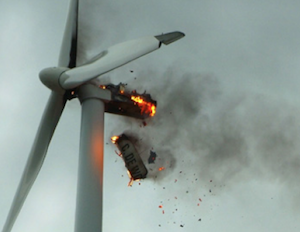
https://rvinjurylawyer.com/videos/best-wind-turbine-crashfail-compilation-hd-2016/

I thought 2 of them sadly passed away.
above the photos of the two men standing by the blades said:-
Posted by u/Darth_050 6 years ago Last week two engineers died when the windmill they were working on caught fire. This might be the last picture of them.

This is starting to sound like "Bad News for the Environment". Yes windmills are not the perfect answer to clean energy sadly, a lot of improvement is needed, also in solar too needs improving, we will get there, hopefully if more investment is made into research and developement which Australia could and shold be a part of.

incognito
The fires started near ACT in2017 ..
https://www.facebook.com/LandlineABC/videos/891373774725851
Well worth seeing this Landline episode

Yes those fires were started by windmills by setting birds on fire
Ingen gave the farmers compensation..... HUSH hush money to make it go away so it did not get the publicity it deserved.
The problem that I see with Solar Panel Farms is that they clear all the area of any vegetation and then keep it clear with glycophosphate. Vegetation absorbs CO2
Yes I see the value of Solar panels but why not make them compulsory on all new buildings ?
... why destroy vegetation ?

Scientists Create ‘Super Enzyme’ That Eats Plastic Bottles Six Times Faster than Previous EnzymesBy Andy Corbley -Oct 5, 2020
Enzymes produced in the stomachs of certain bacteria found during several high-profile discoveries have been combined by English scientists to create a super enzyme, reducing the time it takes for these chemicals to depolymerize, or breakdown plastic from weeks into mere hours.
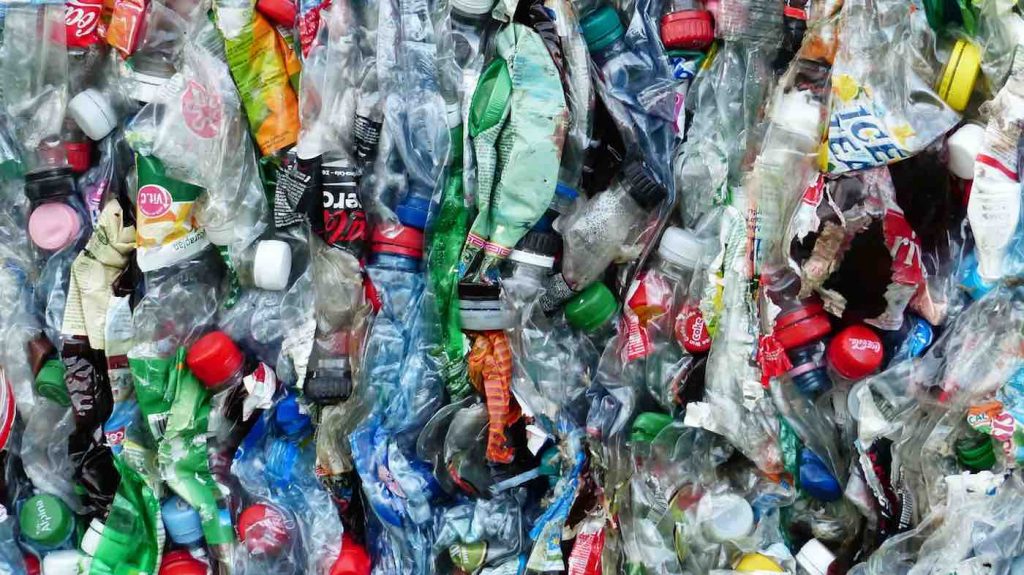
The new discovery would further triple this speed at which the plastic polymers are undone, providing a serious opportunity to win the fight against plastic pollution in the next few decades, as well as opening the door for scientists to create more synthetic enzymes targeted for specific kinds of plastics.
The field of organic enzymatic plastic recycling blew up during the second half of the 2010s, with Japanese scientists in 2016 discovering a bug that lived on plastic trash mounds which actually ate the material and disconnected the polymers of polyethylene terapthalate (PET), one of the most common plastics used in making water bottles and clothing.
Professor John McGeehan from the Center for Enzyme Innovation at the University of Portsmouth would, in 2018, create a superior version of it in his lab completely by accident, that sped up the depolymerization time significantly.
RELATED: New Factory That Uses Enzymes to Recycle All Plastics At Once Has the Backing of Major Corporations
Another breakthrough would come in April of this year from the University of Toulouse, where an enzyme extracted from composting leaves depolymerized PET in about 10 hours when heated to 70°C (158°F).
A French company Carbios would take this technology and lay the groundwork for a market application by 2024-2025.
Pushing the boundariesNow McGeehan is responsible for another breakthrough in a crowded field. By combining PETase, the original enzyme based on the Japanese discovery, with MHETase, another one that converts the disconnected polymers to plastic monomers—a base material ready to be used for recycling—the resulting enzyme “cocktail” broke down plastics three times as fast, while simultaneously putting the plastic on the next step to being reused.
In order to understand how to conjoin them, McGeehan used the Diamond Light Source, a device that bombards molecules with intense beams of X-rays 10 billion times brighter than the sun, allowing the user to see individual atoms in a 3D structure.
This allowed the team to produce a detailed map of the MHETase enzyme, giving them the molecular blueprints to begin engineering a faster enzyme system.
CHECK OUT: New Family of Enzymes Could Transform Common Plant Waste into Fuel and Biodegradable Plastic
“Our first experiments showed that they did indeed work better together, so we decided to try to physically link them, like two Pac-men joined by a piece of string,” said McGeenhan in a statement.
“It took a great deal of work on both sides of the Atlantic, but it was worth the effort—we were delighted to see that our new chimeric enzyme is up to three times faster than the naturally evolved separate enzymes, opening new avenues for further improvements.”
Improvements might include adding further enzymes to breakdown natural material as well as plastics, such as natural/artificial blended fabrics, or take-away drink cups—the plastic lining inside of which often prevents the rest of the cup from being recycled.


Great news, this is what we need to do more of,make use of waste products in every form. Well done Logan City. Would not like to be living close to it though, wonder if it emits smell into the air?
Thanks for posting Suze.

Couple Turns Barren English Estate into Conservation Eden, Rewilding to Attract Rare Species of Astonishing BiodiversityBy Andy Corbley -Oct 7, 2020
In southern England, a struggling farming estate with a 19th-century castle that had been in the Burrell family for over 200 years was low on cash, but a drastic change from farming to biodiversity conservation has given the old manor house a new lease on life.
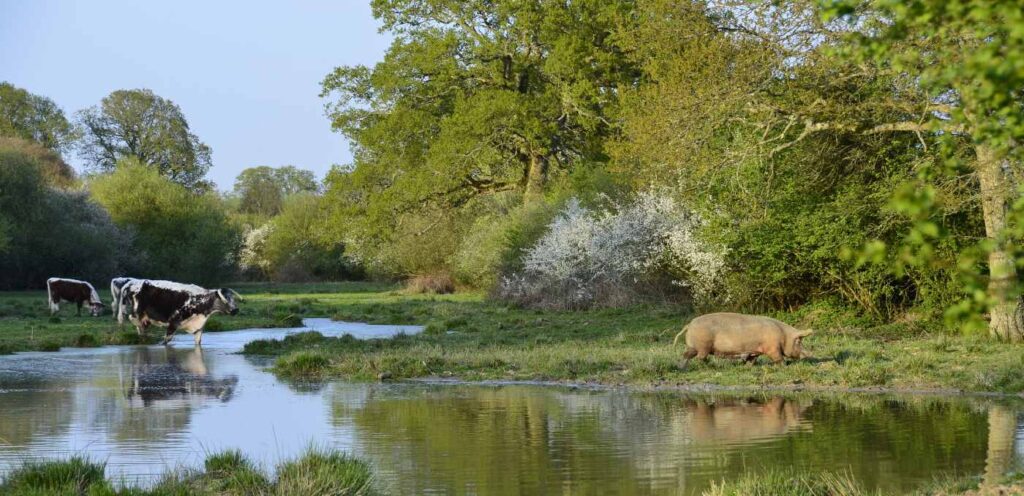 Copyright Knepp Wildland
Copyright Knepp WildlandThe 3,500-acre estate in West Sussex, about 41 miles south of London, was seemingly cursed with low farming yields when Charlie Burrell finished agriculture school in the 1990s.
Burrell, who inherited the estate aged 21, had several years of unsuccessful farming before he knew he needed a radical change as unpaid expenses began piling up.
After he came to the realization that his fields would not produce anymore through conventional agriculture, he considered applying alternative methods to managing his property.
His change was indeed radical, but also successful, with Knepp Estate becoming one of the largest and most prosperous rewilding projects in the history of Britain.
RELATED: The Largest Urban Rooftop Farm in the World is Now Bearing Fruit (and More) in Paris
“Instead of conserving with specific species in mind where you’re focusing on keeping a habitat, locking it down as it is, so that that preserves the numbers of certain species, what we’ve done here is just taken our hands off the steering wheel and just stood back and let nature take over,” explains the aptly named Isabella Tree, Charlie Burrell’s wife, and co-director of the rewilding project on the estate.
The first step for Knepp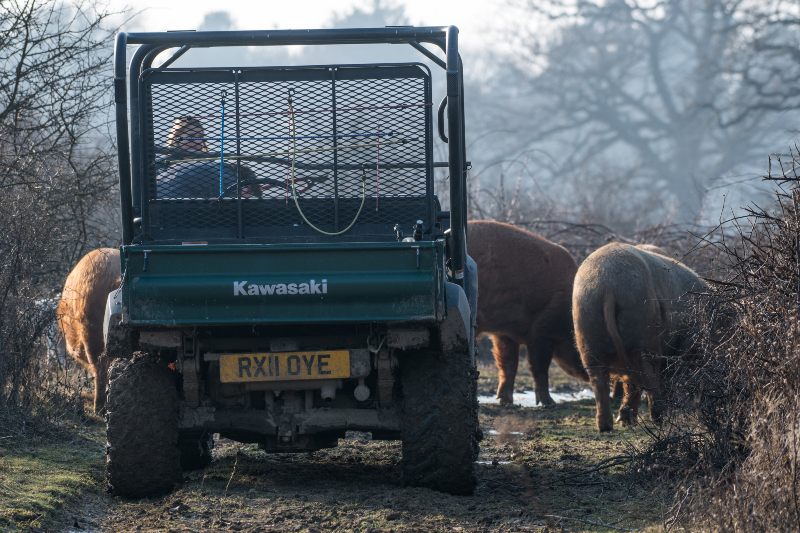 Copyright Knepp Wildland
Copyright Knepp WildlandAn extreme method of conservation, rewilding involves returning an area of land to its natural state—completely natural. This is usually done by, as Isabella said, “taking our hands off the steering wheel,” but can also require more hands-on approaches.
A wild landscape has wild animals, and so the first step for Knepp was returning large mammals to the Knepp Estate fields and thickets, including fallow, roe, and red deer, Tamworth hogs, Exmoor ponies, and longhorn cattle, as the actions of these animals on the environment creates a very unique reaction from the land.
“Disturbance from grazing, browsing, rootling, rubbing and trampling, provides a check on [overgrowing] scrub; and the battle between these two processes–animal disturbance vs vegetation succession–creates all sorts of vegetation structures which contribute to a dynamic, ever-shifting mosaic of valuable habitats,” explains the Knepp Rewilding Project website.
MORE: Australian Scientists Create Seaweed Supplement for Cows that Reduces Methane Emissions by 80%
The movement of large herbivores is key to ecosystem health, as their dispersion of seeds and nutrient-rich dung ensures that trace elements of key nutrients are moved hither and yon in a randomness that leads to the creation of dynamic ecosystems.
While setting all the normal wild pieces on the wilderness board and letting them do their thing may sound like complete anarchy, in nature there tends to be an order inside of her chaos, one which is difficult to create with human hands.
A resurrectionThe rewilding project at Knepp has created one of the most biodiverse areas in all of Britain. The estate grounds act as home to nearly all English megafauna, as well as the rarest mammal in Europe, the barbastelle bat.
Rare birds such as turtle doves, nightingales, peregrine falcons, white storks, and all five species of owls found in Great Britain inhabit the grounds, while one summer the Butterfly Conservatory counted 87 male purple emperor butterflies, an exceptional number for anywhere in England.
At the heart of the Knepp Estate is the River Adur, which was restored to a natural state in 2011 with help from the British government by removing four separate weirs and filing in agricultural drainage canals.
The restored wetlands surrounding the river’s natural meandering path play host to wading birds, amphibians, water insects, sea trout, and other fish, and important endangered wetland plants like the black poplar.
For Charlie and Isabella, their monetary problems disappeared like their once-fallow fields, and along with controlling the herbivore population with free-range organic wild meat, the estate offers camping and “glamping” in a shepherd’s hut, nomad’s yurt, and tree houses. They also offer safari tours of the grounds, fishing, photography workshops, and rewilding courses.
CHECK OUT: Trailblazing Gardener Discovers How to Grow Vegetables in Winter—Now He’s Helping Others Do It Too
They hope their success can act as incentive to other farmers who may own sub-standard fields and are looking for othservationer ways to utilize their land.

That reminds me of the New Forrest in Hampshire UK.


I knew you would like that article Celia, did think about posting it on the "Britain" one.

World first as all of South Australia's power comes from solar panels
The state once known for not having enough power becomes the first major jurisdiction in the world to be powered entirely by energy from the sun.
The Bungala solar power plant near Port Augusta.

For just over an hour on Sunday 11 October 2020, 100 per cent of energy demand was provided by solar panels alone.
Any excess power generated by gas and wind farms on that day was stored in batteries or exported to Victoria via the interconnector.
https://www.abc.net.au/news/2020-10-25/all-sa-power-from-solar-for-first-time/12810366

Fantastic, hope to see more of this in other states. Thanks for posting RnR.

Little-known NSW wetland teeming with waterbirds as state's 'Kakadu' springs to life
One of Australia's most magnificent wetlands, Lake Cowal near West Wyalong is the largest natural inland waterway in New South Wales.
Birds including black swans and grey teals are flocking to Lake Cowal in central western NSW.

There are 277 bird species found at Lake Cowal, including pink-eared ducks, swans, black-tailed native hens, ibis and magpie geese.
The end of the drought in NSW brings "pulsing" bird life to the inland wetland with up to 50,000 birds turning it into a spectacular sight for bird lovers.

What a difference! Good to see RnR and I have not heard of a pink eared duck before!
https://ebird.org/species/pieduc1
Gosh 50,000 birds! What a noise that would make. LOL
Happy days for the birds.
Thanks RnR

Great news for the birds, if only they would stop the duck hunting season.

Victoria will be home to the largest battery in the southern hemisphere as part of a State Government push to transition to renewable energy.
The Moorabool battery will be twice as big as this one at Hornsdale in South Australia.

Renewable energy company Neoen will pay for the 300 megawatt Tesla battery to be installed at Moorabool, near Geelong. It should be ready by November 2021 and could store enough energy to power 300,000 homes.
https://www.abc.net.au/news/2020-11-05/new-tesla-battery-for-moorabool-victoria/12851698

I just heard about that, great news, thanks for posting RnR. Now Victoria needs to stop logging old growth forests.




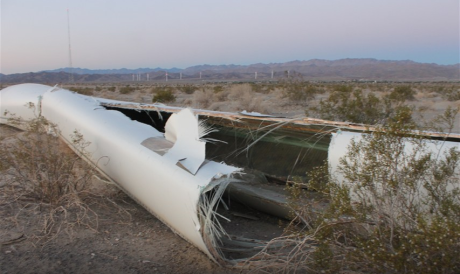

New York Turned the World’s Largest Garbage Dump into a Green Oasis of Native Grasses That Also Powers HomesBy Andy Corbley -Sep 7, 2020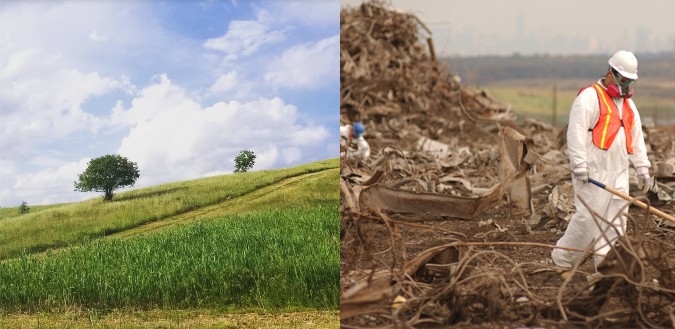
After the world’s largest landfill closed down, New York State officials and nonprofits facilitated a decades-long transition from dump to green outdoors space.
Creating a park three times the size of Central Park? That’s not so easy. The conversion has involved goats, using landfill fumes to methane-power homes, and plenty of manpower as buried trash gets turned into rolling hills of native grass.
Fresh Kills landfill, once the dumping site for all of New York City’s garbage, was a place that once terrorized Staten Islanders with odors and the sight of trash mounds said to have reached 20 stories high.
Now it’s just months away from reopening as one of the world’s great rewilding projects in the boundaries of one of the most densely populated areas in the Western Hemisphere.
Originally promised as a park by former mayor Michael Bloomberg during a dip in the polls, the dump closed in 2001, allowing sanitation department officials to begin work to control the pollution.
RELATED: This California Highway Has Just Become the First State Road Made From Recycled Plastic in the US
The desire to turn it into a park led the Department of City Planning to host an international design competition—the project for creating New York City’s largest park construction in over a century eventually went to the Field Operations firm.
A seriously big clean-upTrucks of iron-rich soil were brought in from New Jersey to cover plastic sheeting that “capped” the garbage mounds, staining local roads red, while methane extraction pipes channeled the fumes of the underground detritus into Staten Island homes to power heating and stoves.
MORE: Instead of Excess Produce Going to Landfills, Companies Are Sending It Off to Be Dried into New Snacks
Next, concrete troughs were constructed to funnel rainwater quickly away from the trash hills, and a local park was restored, along with the baseball diamond, handball courts, and playgrounds. Goats were brought in for their ecological restoration abilities in 2012.
Centered around four capped garbage mounds, fields of native grass species sparkle and wave under the sun, and trails through sun-dappled groves give habitat to mid-Atlantic birds like the grasshopper sparrow.
The mounds are separated by tidal creeks and natural waterways which recapture the image of the Dutch word (kille) for tidal marsh and wetlands that gave the area its curious name “Freshkills” back in 1930.
Turning the world’s largest landfill, once home to 150 million tons of trash, into a 2,200 acre state park takes time. The plan is for Freshkills to open in stages, starting with the North Park Phase 1, in which 21 acres will open to the public next spring, and continuing incrementally for another decade and a half.
The Freshkills website features some 360° pictures that allow you to understand not only the scope of the park, but a chance to imagine what was there before.
CHECK OUT: The Guys Who Sell Ocean Plastic Bracelets Are Closing in on 8 Million Pounds of Waste Pulled From the Sea
The ultimate image of renewal, Freshkills social media pages take advantage of the triumph of all parties involved to educate people on the importance of wetlands, grasslands, animals, and outdoor recreation—all things which New Yorkers will be overjoyed to experience in earnest once the lockdowns lift.